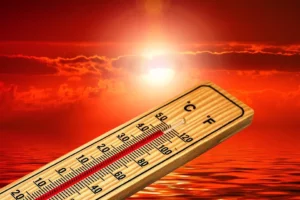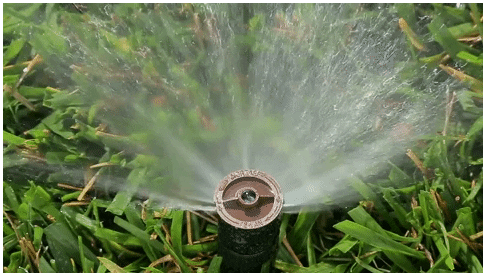“Why Does My Lawn Look Dead?”
Along with July’s intense summer heat comes the prospect of seasonal drought.
In Ohio, we get more than our fair share of 90-degree summer days. These extreme temperatures and dry periods can cause cool-season grasses, such as bluegrass and fescue, to become dormant. That’s when irrigation contractors can expect to receive calls from concerned homeowners.
Have an Education Plan
The prepared contractor has a plan in place to address these customer concerns. You can help alleviate homeowner concerns by educating them on the grass germination and growth process.

Ohio’s Hottest Summer
July 1934 was the hottest month ever recorded in Ohio, setting the following heat records:
- Columbus – 106° F
- Bowling Green – 107° F
- Delaware – 108° F
- Cincinnati – 109° F
- Findlay – 109° F
- Chillicothe – 109° F
- Fremont -110° F
- Wilmington – 111° F
- Hamilton – 111° F
- Defiance – 111° F
- Gallipolis – 113° F
About 160 Ohioans died of heat-related causes during the week of July 20-26, 1934. More recently, during an extreme heat wave in July 2019, the mercury levels climbed to 112 degrees in northern Ohio.
Source: Ohio History Central
For instance, explain how different seeds germinate at different times, and the importance of watering longer but less often.
Your customers need to know that dormancy is nature’s defense mechanism to help plants survive tough, stressful conditions. Avoiding it completely during the dog days of summer can be difficult, but there are things they can do to help lessen its impact.
In general, lawns that have gone dormant should be left dormant until cooler weather sets in. Occasional watering will help prevent damage, but don’t overdo it. Overwatering a lawn in an effort to “wake it up,” can be very stressful to the turf.
Inform your customers that bluegrass can typically withstand about six weeks of dormancy before it suffers drought damage. Factors that can accelerate dormancy include secondary heat from buildings or fences, or south-facing slopes.
Seasonal Drought Survival Tips
Provide your customers with these practical tips on how they can mitigate the effects of dormancy on their lawns:
- Grow drought-tolerant grasses. Most grasses can withstand some dormancy very well, but some grasses cope better than others. For instance, buffalo grass, fine-leaf or tall fescues, and older varieties of Kentucky bluegrass are the most drought-tolerant species found in Ohio.

Columbus-Area
Watering Restrictions
Several municipalities within the Columbus metro area maintain watering schedules year-round, but particularly during the hottest months. For example:
Westerville – Addresses that end in even numbers can water grass on even-numbered days, and those that end in odd numbers on odd-numbered days. (This restriction does not apply to flowerbeds, trees, shrubs and gardens.
Delaware – During periods of limited rainfall, addresses that end in odd numbers can water on Tuesday, Thursday, and Saturday; even-numbered addresses may water on Wednesday, Friday and Sunday. All watering is prohibited on Mondays.
The communities of Gahanna, Dublin, Hilliard, Upper Arlington, Powell, Bexley, Grandview, and Granville impose similar restrictions during the driest months.
Source: Wikilawn
- Newly sodded or seeded lawns should not go dormant. Grass must be well established in order to survive a period of drought. Likewise, lawn that has been damaged by disease or insects does not tolerate dormancy well. It is advised that you water the lawn regularly to keep it green.
- Keep turf as high as possible by raising the mowing height to 3-4 inches during the hottest time of the year. This allows for deeper root development, and tall grass dries out more slowly than shorter grass.
- Understand a dormant lawn’s water needs. A sleeping lawn needs at least half an inch of water every two to three weeks in order to stay alive. If the lawn is receiving that much rainfall, then there is no need to water at all.
- Minimize traffic on the lawn. Foot or vehicle traffic can kill the grass and cause bare spots in the lawn.
- Once summer passes, thoroughly water the lawn to wake it up. Apply enough water to penetrate the soil down to the root — about six to 12-inches below the ground. After about several weeks of cooler temperatures and adequate precipitation, the lawn will be green once again.
Sources:
Featured Image: Adobe, License Granted
Irrigation & Lighting
Green Industry Pros
LawnEQ.com






